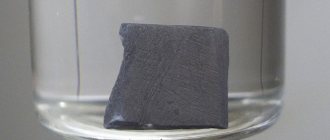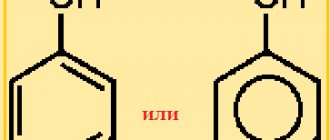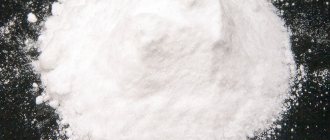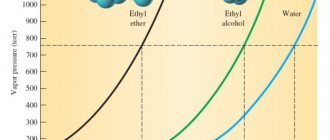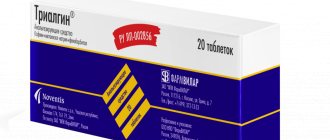Magnesium hydroxide
| Names | |
| IUPAC name Magnesium hydroxide | |
| Other names Magnesium dihydroxide Milk of magnesia | |
| Identifiers | |
| Number of CAS |
|
| 3D model (JSmol) |
|
| CHEBY |
|
| CHAMBL |
|
| ChemSpider |
|
| ECHA InfoCard | 100.013.792 |
| EU number |
|
| Number E | E528 (acidity regulators, ...) |
| Link to Gmelin | 485572 |
| PubChem C.I.D. |
|
| RTECS number |
|
| UNII |
|
| CompTox Dashboard (EPA) |
|
InCHI
| |
Smiles
| |
| Characteristics | |
| Chemical formula | Mg(OH)2 |
| Molar mass | 58.3197 g/mol |
| Appearance | White solid |
| Smell | Without smell |
| Density | 2.3446 g/cm3 |
| Melting temperature | 350 °C (662 °F, 623 K) decomposes |
| Solubility in water |
|
| Solubility product ( K ud) | 5,61 × 10 −12 |
| Magnetic susceptibility (χ) | −22.1 10 −6 cm 3 / mol |
| Refractive index ( n D) | 1,559 [1] |
| Structure | |
| Crystal structure | Hexagonal, hP3 [2] |
| Space group | P 3 m1 No. 164 |
| Lattice constant | A = 0.312 nm, |
| Thermochemistry | |
| Heat capacity ( C ) | 77.03 J/mol K |
| Standard molar entropy ( S o 298) | 64 J mol −1 K −1 [3] |
| Std formation enthalpy (Δ F H ⦵ 298 ) | -924.7 kJ mol -1 [3] |
| Gibbs free energy (Δ f G ˚) | −833.7 kJ/mol |
| Pharmacology | |
| ATC code | A02AA04 (WHO) G04BX01 (WHO) |
| Dangers | |
| MSDS | External Material Safety Data Sheet |
| GHS Pictograms | [4] |
| GHS signal word | Warning [4] |
| GHS Hazard Statements | H315, H319, H335 [4] |
| GHS Precautions | P261, P280, P305+351+338, P304+340, P405, P501 [4] |
| NFPA 704 (fire diamond) | 1 0 0 |
| Flash point | Incombustible |
| Lethal dose or concentration (LD, LC): | |
| LD 50 (average dose) | 8500 mg/kg (rat, oral) |
| Related compounds | |
| Other anions | Magnesium oxide |
| Other cations |
|
| Unless otherwise stated, data is for materials in their standard state (at 25 °C [77 °F], 100 kPa). | |
| N check (what is there?)YN | |
| Links to infoboxes | |
Magnesium hydroxide
is an inorganic compound with the chemical formula Mg (OH) 2.
Occurs naturally as the mineral brucite. It is a white solid with low solubility in water (Ksp = 5.61 × 10 -12). [5] Magnesium hydroxide is a common component of antacids such as milk of magnesia
.
Physical properties of magnesium hydroxide:
| Parameter name: | Meaning: |
| Chemical formula | Mg(OH)2 |
| Synonyms and names in a foreign language | potassium hydroxide magnesium hydroxide brucite (Russian) |
| Type of substance | inorganic |
| Appearance | colorless trigonal crystals |
| Color | white |
| Taste | —* |
| Smell | — |
| Physical state (at 20 °C and atmospheric pressure 1 atm.) | solid |
| Density (state of matter – solid, at 20 °C), kg/m3 | 2344,6 |
| Density (state of matter – solid, at 20 °C), g/cm3 | 2,3446 |
| Decomposition temperature, °C | 350 |
| Molar mass, g/mol | 58,35 |
*Note:
- no data.
HimMax
Magnesium hydroxide
Mg(OH)2
TU 6-09-3759-86
Magnesium hydroxide
- an inorganic substance, the main hydroxide of the metal magnesium, has the formula Mg(OH)2. Weak, slightly soluble base.
Magnesium hydroxide is an inorganic compound found naturally as the mineral brucite. Acts as an antacid with a cleansing effect. It usually has a crystalline form that, when heated, decomposes into water and magnesium oxide. Is a weak base.
Under standard conditions, magnesium hydroxide is an amorphous substance. At temperatures above 350 °C it decomposes into magnesium oxide and water. Absorbs carbon dioxide and water from the air to form basic magnesium carbonate. Magnesium hydroxide is practically insoluble in water, but soluble in ammonium salts. It is a weak base, even an insignificant part of it, dissolved in water, gives the solution a slightly alkaline reaction and colors indicators, for example, phenolphthalein pink. Occurs in nature as the mineral brucite.
| Physical properties | |
| State | hard |
| Molar mass | 58.35 g/mol |
| Density | 2.3446 (20 °C) |
| Thermal properties | |
| T. float. | 350 °C |
| T. vsp. | non-flammable °C |
| Enthalpy of formation | –925 kJ/mol |
| Chemical properties | |
| Solubility in water | 0.0012 g/100 ml |
Physical data of magnesium hydroxide:
| Physical state | hard |
| Color | no color, white color |
| Form | crystalline amorphous powder, hexagonal crystals, granules. |
| Smell | none |
| Molecular mass | 58.33 g/mol |
| Boiling temperature | 100°C. |
| Melting temperature | 350°C |
| Density | 2.36 g/cm3 |
| Solubility | in water 0.9 ml per 100 ml at 18°C; highly soluble in ammonium salts. |
| Stability | stable, sensitive to air |
| Purity | 99% |
Chemical properties of magnesium hydroxide:
- Like all weak bases, magnesium hydroxide is thermally unstable. Decomposes when heated to 350 °C:
M g ( OH ) 2 → Δ TM g O + H 2 O {\displaystyle {\mathsf {Mg(OH)_{2}{\xrightarrow {\Delta T}}MgO+H_{2}O}}}
- Reacts with acids to form salt and water (neutralization reaction)
:
M g ( OH ) 2 + 2 HC l ⟶ M g C l 2 + 2 H 2 O {\displaystyle {\mathsf {Mg(OH)_{2}+2HCl\longrightarrow MgCl_{2}+2H_{2}O }}}
M g ( OH ) 2 + H 2 SO 4 ⟶ M g SO 4 + 2 H 2 O {\displaystyle {\mathsf {Mg(OH)_{2}+H_{2}SO_{4}\longrightarrow MgSO_{4 }+2H_{2}O}}}
- Interaction with acid oxides to form salt and water:
M g ( OH ) 2 + SO 3 ⟶ M g SO 4 + H 2 O {\displaystyle {\mathsf {Mg(OH)_{2}+SO_{3}\longrightarrow MgSO_{4}+H_{2}O }}}
- Interaction with hot concentrated solutions of alkalis with the formation of hydroxomagnesates:
M g ( OH ) 2 + 2 N a OH ⟶ N a 2 [ M g ( OH ) 4 ] {\displaystyle {\mathsf {Mg(OH)_{2}+2NaOH\longrightarrow Na_{2}[Mg(OH )_{4}]}}}
M g ( OH ) 2 + S r ( OH ) 2 ⟶ S r [ M g ( OH ) 4 ] {\displaystyle {\mathsf {Mg(OH)_{2}+Sr(OH)_{2}\longrightarrow Sr[Mg(OH)_{4}]}}}
Applications of Magnesium Hydroxide
Magnesium hydroxide is used to bind sulfur dioxide, as a flocculant for wastewater treatment, as a fire retardant in thermoplastic polymers (polyolefins, PVC), as an additive in detergents, for the production of magnesium oxide, for sugar refining, as a component of toothpastes.
In medicine, it is used as a medicine to neutralize stomach acid, and also as a very strong laxative.
It comes in the form of tablets or liquid.
Used for wastewater treatment, for fireproofing, added to household chemicals and toothpastes.
In the European Union, magnesium hydroxide is registered as a food additive E528.
Preparation of magnesium hydroxide:
Magnesium hydroxide is obtained as a result of the following chemical reactions:
- 1. as a result of the interaction of metallic magnesium with water vapor:
Mg + 2H2O → Mg(OH)2 + H2.
- 2. as a result of the interaction of magnesium oxide and water:
MgO + H2O → Mg(OH)2 (t = 100-125 °C).
- 3. as a result of the interaction of soluble magnesium salts with alkali:
MgCl2 + 2NaOH → Mg(OH)2 + 2NaCl,
Mg(NO3)2 + 2KOH → Mg(OH)2 + 2KNO3.
In this case, magnesium hydroxide precipitates.
- 4. as a result of the interaction of magnesium chloride with calcined dolomite:
MgCl2 + CaO MgO + 2H2O → 2Mg(OH)2 + CaCl2.
In this case, magnesium hydroxide precipitates.
Magnesium hydroxide
International name of the medicinal substance:
Magnesium hydroxide The list of drugs containing the active substance Magnesium hydroxide is given after the description.
Pharmacological action:
Antacid, has a mild laxative effect.
Saline laxative: poorly absorbed, increases osmotic pressure in the intestinal lumen, promotes the transition of fluid along a concentration gradient, increases the volume of intestinal contents, stretches the walls of the gastrointestinal tract, stimulates peristalsis. The laxative effect occurs 0.5-6 hours after administration. Neutralizing free HCl in the stomach, reduces the activity of gastric juice; inactivates pepsin and binds bile acids that enter the stomach as a result of reflux from the duodenum, has a protective effect on the mucous membrane of the stomach and duodenum; accelerates the motility of the stomach and all parts of the intestines. Does not cause secondary hypersecretion of HCl and alkalosis. Pharmacokinetics:
Mg2+ is excreted with the intestinal contents in the form of poorly soluble hydroxide and water-soluble salts - Cl- and bicarbonate.
Indications:
Gastralgia, heartburn (including after an error in diet, abuse of coffee, ethanol, smoking), duodenitis, gastritis (with normal or increased secretory function), peptic ulcer of the stomach and duodenum, constipation.
Contraindications:
Hypersensitivity, hypermagnesemia, children's age (up to 3 years, for tablets - up to 6 years). Caution.
Kidney failure. Side effects:
CNS depression (with absorption of Mg2+).
Allergic reactions. Interaction:
Interferes with the absorption of tetracycline antibiotics, Fe salts, anticholinesterase drugs, corticosteroids, digoxin, theophylline.
Ca2+ salts reduce the severity of the laxative effect. Special instructions:
After opening the bottle of suspension, the drug must be used within 6 months.
In patients with impaired renal function, hypermagnesemia and toxic reactions (CNS depression) may develop. Preparations containing the active ingredient Magnesium hydroxide:
Laxomag, Milk of Magnesia, Our choice - May-magnesia
The information provided in this section is intended for medical and pharmaceutical professionals and should not be used for self-medication. The information is provided for informational purposes only and cannot be considered official.
Chemical properties of magnesium hydroxide. Chemical reactions of magnesium hydroxide:
Magnesium hydroxide is a basic base, i.e. it has both basic properties.
Magnesium hydroxide is a weak, slightly soluble base.
The chemical properties of magnesium hydroxide are similar to those of other base metal hydroxides. Therefore, it is characterized by the following chemical reactions:
1. reaction of magnesium hydroxide with sodium hydroxide:
Mg(OH)2 + 2NaOH → Na2[Mg(OH)4] (t = 100 °C).
As a result of the reaction, sodium tetrahydroxomagnesate is formed. The reaction uses a saturated sodium hydroxide solution.
2. reaction of magnesium hydroxide with carbonic acid:
Mg(OH)2 + H2СO3 → MgСO3 + 2H2O.
The reaction produces magnesium carbonate and water.
3. reaction of magnesium hydroxide with phosphoric acid:
Mg(OH)2 + 2H3PO4 → Mg(H2PO4)2 + H2O,
Mg(OH)2 + H3PO4 → MgHPO4 + 2H2O,
3Mg(OH)2 + 2H3PO4 → Mg3(PO4)2 + 6H2O.
As a result of the reaction, in the first case, magnesium dihydrogen orthophosphate and water are formed, in the second, magnesium hydrogen orthophosphate and water, in the third, magnesium orthophosphate and water.
4. reaction of magnesium hydroxide with nitric acid:
Mg(OH)2 + 2HNO3 → Mg(NO3)2 + 2H2O.
As a result of the reaction, magnesium nitrate and water are formed.
The reactions of magnesium hydroxide with other acids proceed similarly.
5. reaction of magnesium hydroxide with hydrogen fluoride:
Mg(OH)2 + 2HF → MgF2 + 2H2O.
As a result of the reaction, magnesium fluoride and water are formed.
6. reaction of magnesium hydroxide with hydrogen bromide:
Mg(OH)2 + 2HBr → MgBr2 + 2H2O.
As a result of the reaction, magnesium bromide and water are formed.
7. reaction of magnesium hydroxide with hydrogen iodide:
Mg(OH)2 + 2HI → MgI2 + 2H2O.
As a result of the reaction, magnesium iodide and water are formed.
8. thermal decomposition reaction of magnesium hydroxide:
Mg(OH)2 → MgO + H2O (t = 350 °C).
As a result of the reaction, magnesium oxide and water are formed.
9. reaction of magnesium hydroxide with hydrogen peroxide:
H2O2 + Mg(OH)2 → MgO2 + 2H2O (t < 20 °C).
As a result of the reaction, magnesium peroxide and water are formed. The reaction uses a concentrated solution of hydrogen peroxide.
10. reaction of magnesium hydroxide with sulfur oxide:
Mg(OH)2 + SO3 → MgSO4 + 2H2O.
As a result of the reaction, magnesium sulfate and water are formed.
11. reaction of magnesium hydroxide with carbon monoxide:
Mg(OH)2 + 2CO2 → Mg(HCO3)2.
As a result of the reaction, magnesium bicarbonate is formed. During the reaction, magnesium hydroxide is used in the form of a suspension.
12. reaction of magnesium hydroxide with carbon monoxide:
Mg(OH)2 + 2N2O5 → Mg(NO3)2 + 2HNO3 (t = 40-60 °C).
As a result of the reaction, magnesium nitrate and nitric acid are formed.
Mineralogy[edit]
Brucite crystals (mineral form of Mg(OH)2) from Sverdlovsk region, Ural, Russia (size: 10.5 × 7.8 × 7.4 cm).
Brucite, a mineral form of Mg(OH)2 commonly found in nature, also occurs in 1:2:1 clay minerals, among others chlorite, in which it occupies an intermediate position, usually filled with monovalent and divalent cations such as Na+ . , K + , Mg 2+ and Ca 2+ . As a consequence, the chlorite layers are cemented by brucite and cannot swell or shrink.
Brucite, in which some of the Mg 2+ cations have been replaced by Al 3+ cations, becomes positively charged and forms the main basis of layered double hydroxide (LDH). LDH minerals such as hydrotalcite are powerful anionic sorbents but are relatively rare in nature.
Brucite can also crystallize in cement and concrete when exposed to seawater. Indeed, the Mg 2+ cation is the second most abundant cation in seawater, just after Na + and before Ca 2+ . Since brucite is a swelling mineral, it causes local volumetric expansion, which is responsible for tensile stress in concrete. This causes cracks and fissures to form in the concrete, accelerating its deterioration in seawater.
For the same reason, dolomite cannot be used as a construction aggregate for making concrete. The reaction of magnesium carbonate with free alkali metal hydroxides present in the cement pore water also results in the formation of expansive brucite.
MgCO 3 + 2 NaOH → Mg (OH) 2 + Na 2 CO 3
This reaction, one of the two main alkali–aggregate reactions (AAR), is also known as the alkali–carbonate reaction.
Interaction
The interaction of magnesium hydroxide with other drugs occurs during simultaneous oral use.
- Concomitant use with drugs containing calcium is not recommended: this reduces the laxative effect of magnesium hydroxide.
- In turn, magnesium hydroxide reduces the effects of iron salts, theophylline, digoxin, glucocorticosteroids, anticholinesterase drugs and tetracyclines.
Receipt
Given the low prevalence of magnesium hydroxide in mineral deposits, it is mined using a different method. For industrial needs, Mg (OH) 2 is obtained by precipitation of sea water and brines. Hydroxide extraction from sea water was first used in 1865 on the French Mediterranean coast.
In laboratory languages, magnesium hydroxide can be synthesized by burning magnesium metal in water vapor:
Precipitation of poorly soluble hydroxide during the interaction of magnesium salts with alkalis and ammonium hydroxide is also used.
However, precipitation with ammonium hydroxide occurs entirely due to the constant decrease in OH - ions.
Special instructions and precautions
Please note:
- It is not recommended to use the open suspension after six months.
- Pregnant and breastfeeding women should consult their doctor about prescribing magnesium hydroxide.
- If allergy symptoms occur (itching, rashes, swelling), immediately stop taking the drug and seek help from a hospital.
- The product should not be combined with alcoholic beverages.
For children
In pediatrics, antacids are used exclusively for medical reasons, and treatment is carried out under the supervision of a physician. Magnesium hydroxide should not be used by children under 3 years of age.
Preparations containing
Preparations containing magnesium hydroxide are given in the table.
| A drug | Magnesium hydroxide content | Additional component | Manufacturer country |
| Milk of magnesia | a) Tablets 300 mg (pack of 24 pcs.) b) Suspension 300 ml (415 mg per 1 tbsp.) | — | Great Britain |
| «Maalox» | Suspension (600 mg in 1 tbsp.) | aluminum hydroxide | France |
| «Ajiflux» | a) Tablets 400 mg (pack of 20 pcs.) b) Suspension (600 mg in 1 tbsp.) | aluminum hydroxide | India |
| «Almagel» | Suspension 75 mg (in 10 ml) | aluminum hydroxide | Bulgaria |
| «Altacid» | Suspension (127.5 mg in 5 ml) | aluminum hydroxide | Bosnia and Herzegovina |
| «Alumag» | Tablets 200 mg (pack of 10 pcs.) | aluminum hydroxide | Poland Hungary |
| «Gastal» | Tablets 300 mg (pack of 24, 30, 60 pcs.) | aluminum hydroxide, magnesium carbonate | Croatia Israel |
| «Stomalox» | Tablets 400 mg (pack of 20 and 40 pcs.) | aluminum hydroxide | Armenia |
* 1 tbsp. l. contains 15 ml of medicine
Magnesium hydroxide: instructions for use
A suspension is made from the powder, tablets and gels are taken in finished form. The product should be washed down with a small amount of clean water, and the tablets should be chewed. To increase the duration of exposure, the medicine should be taken after meals (after 1-3 hours).
The approximate dosage is given in the table (to select individual doses, consult your doctor).
| Age | Dosage | |
| Antacid action | Laxative effect | |
| 3-6 years | 400 mg up to 4 times a day | — |
| 6-12 years | 300-600 mg up to 4 times a day | 250-400 mg at bedtime |
| Over 12 | 0.3-1.2 g up to 4 times a day | 0.8-1.8 g before bed |
Overdose
According to the instructions, no data on overdose have been reported. But if an overdose is suspected, symptomatic therapy is prescribed and the following assistance measures are provided:
- artificial vomiting if there is no natural urge;
- gastric lavage;
- taking sorbents (activated carbon, Atoxil, Polysorb);
- drink plenty of water - up to 3 liters of clean water;
- restoration of water-salt balance caused by fluid loss (“Regidron”);
- bed rest;
- diet excluding coarse fiber.
Attention! If symptoms (diarrhea, lethargy, facial redness) do not go away within 24 hours, call an ambulance.
pharmachologic effect
The product interacts with the acidic contents of the stomach, neutralizing hydrochloric acid to water and indifferent salt (hydroxide also partially interacts with bile acids). In this way, the effect of reducing acidity is achieved, and the walls of the stomach and esophagus (with reflux) are not additionally injured. In this case, magnesium hydroxide is not absorbed from the cavity of the digestive organs.
By reducing acidity, the active substance further reduces the enzymatic activity of pepsin. But the antibacterial properties of hydrochloric acid are preserved.
Magnesium hydroxide also has a gastroprotective effect: by stimulating prostaglandin synthesis and increasing mucus production, the product protects the walls of the gastrointestinal tract from damage by irritants (alcohol, caffeinated drinks) and bacterial agents (Helicobacter Pylori).
A non-absorbable antacid is capable of stimulating regenerative processes in the area of ulceration of the gastric wall.
Magnesium chloride, formed during the reaction of magnesium hydroxide with hydrochloric acid, then enters the intestinal lumen. This salt has a laxative effect by changing (increasing) osmotic pressure and increasing intestinal contents. In addition, magnesium salts enhance peristalsis of the digestive organs.
Magnesium hydroxide begins to act almost immediately after administration (within 20-30 minutes) as an antacid, and within 1-6 hours after use as a laxative.
Distribution in nature
Magnesium hydroxide occurs naturally as the mineral brucite. Large deposits of this rock are very rare. In Russia, it is mined at the Kuldur deposit, where its reserves are estimated at 14 million tons. Its production proceeds at a rate of approximately 250 thousand tons of product per year, but since this year production volumes have doubled. The reason for this was the good demand for this mineral abroad. The largest importer is Japan.
Brucite looks like white, gray or greenish-white crystals with a glassy sheen at the fracture. It has a fairly low hardness, so it can be easily cut with a knife. May contain impurities. Depending on their quantity and type, several subspecies of this mineral are distinguished. Thus, ferronemalite contains, in addition to magnesium hydroxide, 5% iron in the form of oxide, and ferrobrusite – already as much as 36%. Iron oxide is brown in color (the color of rust), so these minerals take on the same hue instead of the usual light green. There is also mangobrucite. Manganese acts as an impurity here. This mineral already has a honey-yellow color. But upon contact with atmospheric oxygen, the mineral quickly loses its beautiful color and quickly turns black.
This mineral is used mainly as a raw material. Magnesium oxide and other compounds, fluxes, and various refractory materials are obtained from it. But brucite can be used without any processing. Thus, this mineral is used to purify gases from chlorine and for sorption filtration of water.
Application in other industries
Magnesium hydroxide is also used in the food industry as an additive E528. In products it regulates acidity and stabilizes color. Magnesium hydroxide is also used to bind sulfur dioxide, the appearance of which is undesirable in food products. It is used in the production of canned vegetables, sauces, marinade and cheese. This additive is considered harmless, but it is banned in Australia, the UK and New Zealand.
Magnesium hydroxide is also used as a fire-retardant additive in polymers (PVC, polyolefins), as an additive in detergents and toothpastes, for sugar refining and wastewater treatment.
The oxide obtained from magnesium hydroxide is a rather useful compound. It can withstand temperatures of about 3000 degrees, so it is used as a fireproof material. So, it is added to bricks, from which blast furnaces are then made. Magnesium oxide is also used as a sorbent for the purification of petroleum products. The abrasive properties of this compound are also high. It is used to clean and polish the surfaces of parts in the electronics industry.
Indications for use
The drug is prescribed in the presence of the following disorders:
- chronic gastritis (with hypersecretion of hydrochloric acid and with normal acidity);
- ulcerative lesions of the gastrointestinal tract (mainly the stomach);
- pain in the stomach area;
- episodic heartburn after eating poor-quality food, alcohol, irritants;
- reflux disease;
- constipation.

